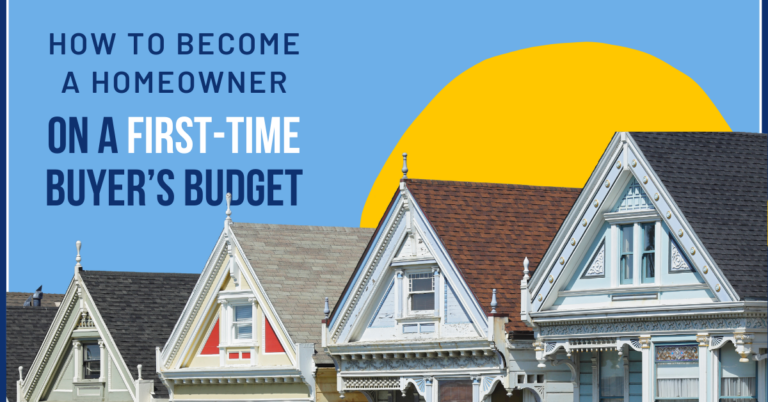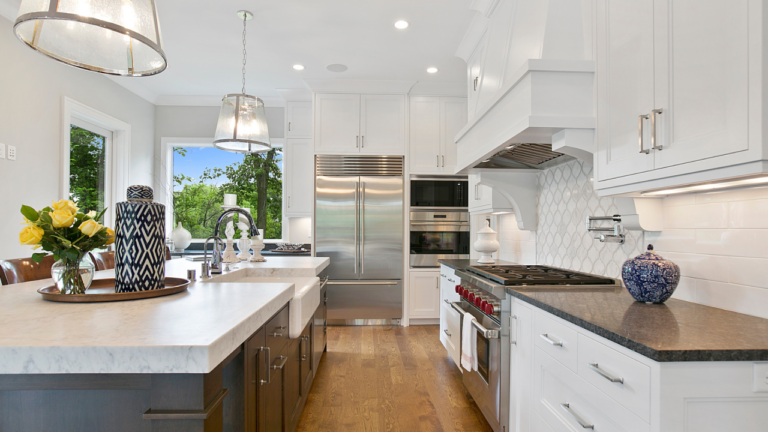Selling and buying a home simultaneously is daunting, even in the most straightforward circumstances. In a perfect world, you’d price your home to sell quickly, while buying the next one at a great price and moving in without a hitch. Unfortunately, real estate transactions are rarely that simple. Factor in the intricacies of the fast-paced and often unpredictable San Francisco real estate market, and it becomes a formidable task.
This can be especially stressful if you’re counting on the proceeds from the sale of your current home to purchase your new one. However, with some careful planning and a bit of flexibility, it is possible to successfully navigate the San Francisco real estate market while selling and buying a house at the same time.
Understanding the Unique Challenges of San Francisco’s Market
San Francisco’s real estate market is unlike any other in the country. With sky-high home prices, tech industry volatility, and limited housing inventory, timing, and precision become critical when coordinating a home sale and purchase. It’s essential to have a solid understanding of the current state of the local real estate market. The following factors can greatly impact your experience as both a seller and buyer:
Financing Your Next Home While Your Equity Is Tied Up
In a city where the median home price frequently surpasses $1 million, one of the primary hurdles is unlocking equity from your current home. Most homeowners rely on the equity they’ve built to fund the down payment on their next house. However, accessing that equity usually requires selling the current property first.
A Quick Tip: It’s crucial to consult with a financial advisor or mortgage lender early in the process. They can outline your options, such as bridge loans, to help finance your next home before your current home’s sale is complete. Although bridge loans come with higher interest rates, they can be the lifeline needed to make your transitions smoother in San Francisco’s competitive market.
Juggling Complex Logistics
Managing the logistics of selling and buying a home is no simple feat. In San Francisco, coordinating transaction timelines can be even trickier due to the quick turnaround times and often limited availability of desirable properties. The logistics include aligning closing dates, negotiating move-in and move-out terms, and organizing your household for a seamless transition.
Why a Local Expert Matters: A seasoned San Francisco real estate agent can be invaluable. They understand the nuances of neighborhoods, market cycles, and how to negotiate terms that can give you some breathing room between selling and moving.
Prices
The San Francisco real estate market is notoriously competitive and expensive. It’s essential to have a realistic understanding of home prices in the city and be prepared to act quickly if you find a property that fits your budget and needs. This understanding will help you make informed decisions and avoid wasting time and resources on properties that may be out of reach.
Tip: Consider working with a real estate agent who has experience in the San Francisco market. They can give you valuable insight into current prices, trends, and what to expect during the buying process.
Inventory
The truth is, that there has always been a shortage of inventory in the San Francisco housing market. This means that there are more buyers than available homes for sale, leading to increased competition and potentially higher prices. As a buyer, it’s crucial to be proactive and stay on top of new listings to increase your chances of finding the right property.
Tip: Ask your real estate agent for access to their network and databases to get early alerts on new listings. They can also help you narrow down your search criteria to find homes that meet your unique needs and preferences. For example, I send out a list of off-market properties every week to my clients, giving them an advantage in the competitive San Francisco market.
Timing
The timing of your sale and purchase can greatly impact your experience. In general, spring tends to be the busiest time for the housing market in San Francisco, but it also means more competition. The market can shift quickly, and even slight changes can significantly affect pricing and availability. It’s important to have a clear understanding of your own timeline, as well as the current market conditions, so you can act strategically.
Tip: If you’re a buyer, consider looking for homes during the slower seasons (typically winter months) when there may be less competition. For sellers, it’s essential to time your listing strategically and work with an experienced agent who knows how to market your home effectively.
Neighborhoods
There are 36 officially recognized neighborhoods in San Francisco, but the city is made up of even more micro-neighborhoods, each with its own unique characteristics and charm. As such a diverse city, it’s crucial to research and visit different areas before deciding on where you want to live. There are also vast differences in prices between neighborhoods, so it’s essential to determine which ones best fit your budget and lifestyle.
Tip: Consider factors like proximity to public transportation, schools, parks, and amenities when exploring neighborhoods. It can also be helpful to talk to current residents or reach out to your real estate agent for their insights on different areas.
Exploring Your Options: Contingent Offers, Bridge Loans, and Rent-Back Agreements
Navigating San Francisco’s real estate market often requires creative strategies to secure a new home while selling your current one.
1. Making a Contingent Offer
A contingent offer means that your new home purchase is dependent on the successful sale of your current home. While this is a safer financial option, it can be challenging in a hyper-competitive market like San Francisco. Sellers here often prefer non-contingent offers to expedite deals, meaning your contingent bid may lose out to more attractive offers. If you must use a contingency, work closely with your agent to craft the strongest possible offer. This may involve offering above the asking price or waiving less critical contingencies, like the home inspection.
2. Using Bridge Loans
If your finances allow, a bridge loan can help cover the down payment for your new home while your current home is still on the market. Bridge loans use your existing home’s equity as collateral, but keep in mind that these are short-term loans with higher interest rates. You’ll want to discuss with your lender the terms and conditions, including repayment plans, before committing to a bridge loan. In most cases, these loans must be paid back in full within six months to a year, so be sure to have a solid plan in place for selling your current home.
3. Rent-Back Agreements
A rent-back agreement is when you sell your current home and lease it back from the buyer for a set period. This can provide you with the necessary flexibility to find your next home without the pressure of moving immediately.

The Pros and Cons of Selling First vs. Buying First
Deciding whether to sell your home before buying a new one depends on your financial situation and risk tolerance. Each approach has advantages and disadvantages, especially within the San Francisco market.
If You Decide to Sell First
Pros:
- By selling first, you’ll know exactly how much money you have to work with when purchasing your new home. This can help you avoid any potential financial surprises later on.
- With the sale of your current home complete, you won’t feel pressured to rush into a decision and potentially settle for a less-than-desirable property.
- You avoid the risk of carrying two mortgages simultaneously, which can be a heavy financial burden.
- As a non-contingent buyer, you may have more negotiating power when making an offer on a new home.
Cons:
- If your home sells quickly but you haven’t found a new place yet, you may need to arrange for temporary housing or storage for your belongings.
- If the housing market is competitive, you may find yourself in a bidding war for your dream home and end up paying more than expected.
- You’ll need to be prepared to move quickly once you do find a new home, which can be stressful and overwhelming.
How to Make It Work: Many sellers in San Francisco opt for short-term rentals or extended-stay accommodations if they cannot time their transactions perfectly. It’s wise to consider the potential costs and challenges of temporary living arrangements.
If You Choose to Buy First
Pros:
- You can take your time finding the perfect new home and move in without delay. This can eliminate the stress and uncertainty of trying to find a new place while also selling your current home.
- You won’t have to deal with temporary housing or storage, which can save you time and money.
- If the market is competitive, buying first can give you an advantage over other buyers who are still trying to sell their homes.
Cons:
- If your current home takes longer than expected to sell, you may end up carrying two mortgages at once, which can be a financial strain.
- There’s a risk that you may need to lower your asking price or make concessions in order to sell your previous home quickly. This could result in a loss of profit.
Bridge Loans: As mentioned, these financing options can provide temporary relief. However, they come with higher interest rates and the pressure of needing to sell your old home swiftly.
Strategies to Ensure a Smooth Transition
Regardless of which path you choose, preparation and flexibility are key. Here are some strategies to minimize stress and maximize efficiency:
1. Work with a Local Expert
A skilled real estate agent with in-depth knowledge of San Francisco can make all the difference. They can help align the sale and purchase, negotiate favorable terms, and navigate the unique market dynamics of the city. From understanding how the tech industry influences local real estate to knowing which neighborhoods are up-and-coming, a great agent is your best ally.
2. Plan for a Gap Period
If your transactions don’t line up perfectly, plan for a potential gap. This might mean moving into a short-term rental or arranging for a rent-back agreement. Keep your belongings organized and consider hiring professional movers who can handle storage if necessary.
3. Declutter and Stage Your Home Early
San Francisco buyers are discerning, and a well-staged home can make a significant difference. Declutter and stage your property to make it more appealing. Not only will this help your home sell faster, but it could also result in a higher offer.
4. Be Flexible and Prepared for Negotiations
In a market as fast-paced as San Francisco’s, things change rapidly. Be prepared to negotiate and adapt as needed. Whether it’s adjusting your offer or rethinking your timing, flexibility can be a game-changer.
How to Maximize Your Success When Buying and Selling at the Same Time
Selling and buying a home simultaneously in San Francisco is a delicate dance, but with the right strategy, it can be done. From timing your sale and purchase to exploring creative financing options, there are many ways to maximize your success. By staying organized and flexible, you can navigate this kind of complex transaction with confidence. The key is preparation, a solid plan, and working with a trusted real estate professional who understands the nuances of the Bay Area market.
Ready to take the next step? Contact me today to discuss your options and create a plan that fits your unique needs and goals.








